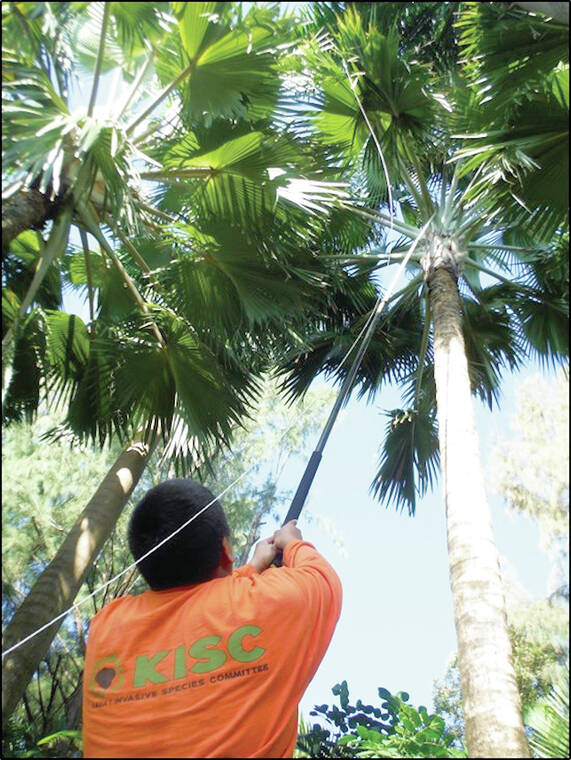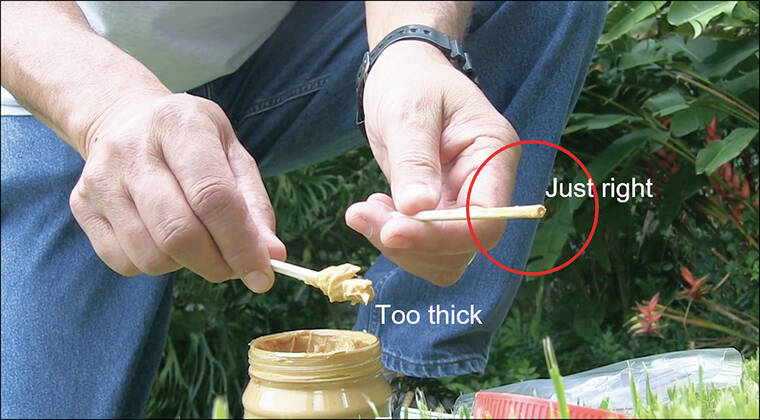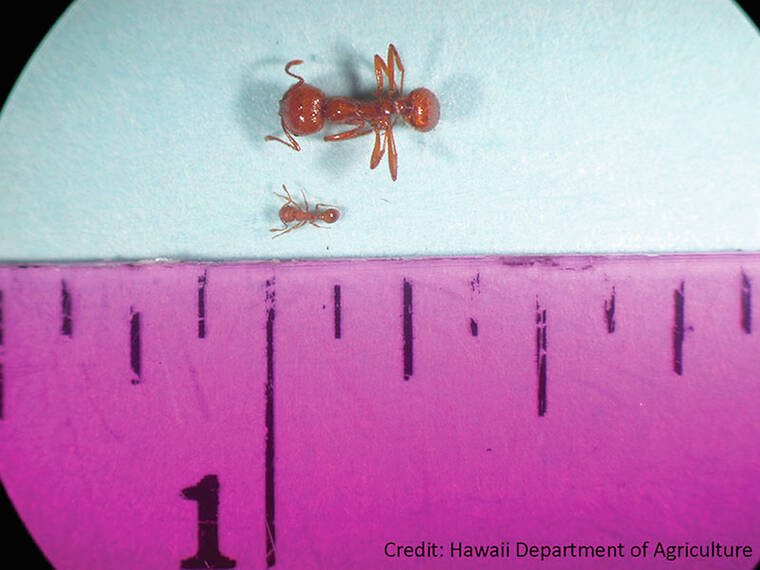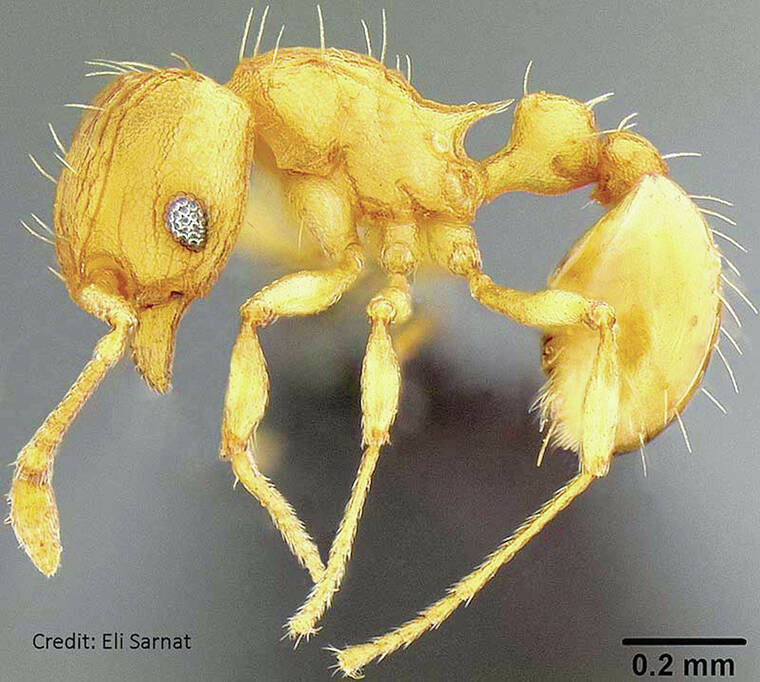LIHU‘E — One nest can fit inside a macadamia nut. One colony can cover acres. They treat smaller insects like livestock, and can remain undetected for years — until they rain from the trees, stinging people, livestock and pets.
They are little fire ants (Wasmannia auropunctata), or LFA, and a 13-acre infestation reported on a North Shore farm this summer has experts on high alert.
Personnel from the state Department of Agriculture, the Hawai‘i Ant Lab and the Kaua‘i Invasive Species Committee met online Wednesday to update the public.
“The first treatment plan was applied on Sept. 21, 2021, in Moloa‘a,” DOA pest-control specialist Craig Kaneshige said. “It will be repeated every six weeks for up to a year and the sites, later on, will be surveyed every quarter to detect the effects of the treatments.”
Humans are most-often responsible for the spread of hitchhiking ants. Experts also intend to survey the Moloa‘a property owner’s residence and other locations to ensure the pests have not established themselves elsewhere.
“People often ask, ‘How quickly do little fire ants spread?’” explained Heather Forester of HAL, who repeatedly referred to LFA as “monsters.” “I like to say ‘45 miles an hour in the back of your truck.’ All you need is a single fertile queen and several workers to start up a new colony.”
Little fire ants are as long as a penny is thick, but pack a powerful sting that can blind animals and torture field workers and recreationists.
Ironically, these agricultural scourges are farmers themselves, managing populations of homopteran insects, like aphids, for food.
“The ants will feed off of the sweet honeydew nectar that they produce,” Forester said. “They tend to them and literally move them around like we would move around cattle. The buildup of black sitting mold from all of the homopteran insects can damage crops, stunt growth and cause fruit spoilage.”
Little fire ants were first detected on Kaua‘i in Kalihiwai in 1999, the same year the species entered the state, in lower Puna on Hawai‘i Island.
The Kalihiwai infestation was from an untreated box of palms from Hawai‘i Island. The LFA colony reemerged in 2003 after initial treatment, but was finally was deemed under control in 2018, when no ants were found in a survey.
A second LFA infestation on Kaua‘i was reported in August 2019, when a colony was confirmed in the middle of residential Kilauea. No ants have been documented following treatment at this site, although surveys are ongoing.
The respective causes of the Kilauea and Moloa‘a infestations have not been identified.
Experts stressed the importance of prevention at Wednesday’s meeting, claiming LFA — which has overrun Hawai‘i Island — can be eradicated on Kaua‘i through multi-agency partnerships and residents’ vigilance.
“Being that this ant was first detected on Kaua‘i in ‘99 and there are now three confirmed detections to date, there’s likely going to be other detections in the future,” HAL’s Michelle Montgomery said.
Best practices against LFA include regular surveys, conducted with popsicle sticks smeared with peanut butter; the establishment of “quarantine zones” for potentially infected material; the application of certain pesticides; and certain produce-cleaning methods.
Free LFA survey kits are available at public libraries, KISC’s Lihu‘e office or by direct mail through stoptheant.org. Kits include all necessary collection materials and specimen-delivery instructions.
Confirmed LFA infestations are treated as private by KISC, which initiates the specimen-identification process.
“Only the person that submitted the samples will be informed of the results. We keep all LFA infestation locations and homeowners or property owners confidential,” KISC Project Manager Tiffani Keanini said. “If LFA are confirmed, we’re here to help you. Our only focus is to locate and eliminate the species before it can further spread on the island and eradication becomes impossible.”
A recording of Wednesday’s seminar will be made available online, according to organizers.
“LFA are awful. Everybody hates them. Nobody wants them,” Montgomery said.
•••
Scott Yunker, general-assignment reporter, can be reached at 245-0437 or syunker@thegardenisland.com.






